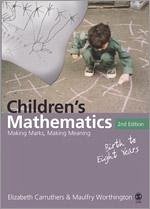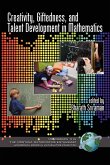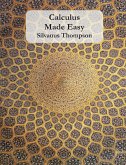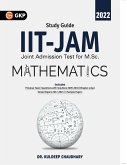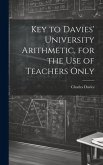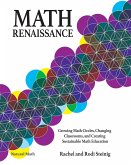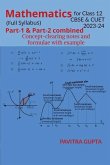- Broschiertes Buch
- Merkliste
- Auf die Merkliste
- Bewerten Bewerten
- Teilen
- Produkt teilen
- Produkterinnerung
- Produkterinnerung
This book draws on the authors' many years of teaching children aged three to eight years and also on their extensive research with children in the home, nursery and school. The authors explain the development and range of young children's mathematical marks and visual representations, showing how children make mental connections between their own early marks and subsequent abstract mathematical symbolism, and go on to develop their own written methods. Combining theory and practice, this acclaimed book demonstrates how children's own mathematical graphics are highly creative and show deep…mehr
Andere Kunden interessierten sich auch für
![Creativity, Giftedness, and Talent Development in Mathematics (PB) Creativity, Giftedness, and Talent Development in Mathematics (PB)]() Creativity, Giftedness, and Talent Development in Mathematics (PB)62,99 €
Creativity, Giftedness, and Talent Development in Mathematics (PB)62,99 €![Calculus Made Easy Calculus Made Easy]() Silvanus P ThompsonCalculus Made Easy22,99 €
Silvanus P ThompsonCalculus Made Easy22,99 €![IIT JAM 2022 Mathematics - Guide by Dr. Kuldeep Chaudhary IIT JAM 2022 Mathematics - Guide by Dr. Kuldeep Chaudhary]() Kuldeep ChaudharyIIT JAM 2022 Mathematics - Guide by Dr. Kuldeep Chaudhary43,99 €
Kuldeep ChaudharyIIT JAM 2022 Mathematics - Guide by Dr. Kuldeep Chaudhary43,99 €![Key to Davies' University Arithmetic, for the Use of Teachers Only Key to Davies' University Arithmetic, for the Use of Teachers Only]() Charles DaviesKey to Davies' University Arithmetic, for the Use of Teachers Only33,99 €
Charles DaviesKey to Davies' University Arithmetic, for the Use of Teachers Only33,99 €![Math Renaissance Math Renaissance]() Rachel SteinigMath Renaissance57,99 €
Rachel SteinigMath Renaissance57,99 €![Equity in Mathematics Education Equity in Mathematics Education]() Equity in Mathematics Education62,99 €
Equity in Mathematics Education62,99 €![Mathematics for class 12 (CBSE & CUET) Full Syllabus Mathematics for class 12 (CBSE & CUET) Full Syllabus]() Pavitra GuptaMathematics for class 12 (CBSE & CUET) Full Syllabus32,99 €
Pavitra GuptaMathematics for class 12 (CBSE & CUET) Full Syllabus32,99 €-
-
This book draws on the authors' many years of teaching children aged three to eight years and also on their extensive research with children in the home, nursery and school. The authors explain the development and range of young children's mathematical marks and visual representations, showing how children make mental connections between their own early marks and subsequent abstract mathematical symbolism, and go on to develop their own written methods. Combining theory and practice, this acclaimed book demonstrates how children's own mathematical graphics are highly creative and show deep levels of thinking. The authors show how this is the key to success in school mathematics and to higher levels of achievement. The authors are winners of TACTYC's (2003) Jenefer Joseph Award for the Creative Arts (3 - 8) - awarded for their innovative work with children on mathematical graphics.
Hinweis: Dieser Artikel kann nur an eine deutsche Lieferadresse ausgeliefert werden.
Hinweis: Dieser Artikel kann nur an eine deutsche Lieferadresse ausgeliefert werden.
Produktdetails
- Produktdetails
- Verlag: Sage Publications UK
- 2. Auflage
- Seitenzahl: 282
- Erscheinungstermin: 1. August 2006
- Englisch
- Abmessung: 244mm x 170mm x 15mm
- Gewicht: 492g
- ISBN-13: 9781412922838
- ISBN-10: 1412922836
- Artikelnr.: 21299498
- Herstellerkennzeichnung
- Libri GmbH
- Europaallee 1
- 36244 Bad Hersfeld
- gpsr@libri.de
- Verlag: Sage Publications UK
- 2. Auflage
- Seitenzahl: 282
- Erscheinungstermin: 1. August 2006
- Englisch
- Abmessung: 244mm x 170mm x 15mm
- Gewicht: 492g
- ISBN-13: 9781412922838
- ISBN-10: 1412922836
- Artikelnr.: 21299498
- Herstellerkennzeichnung
- Libri GmbH
- Europaallee 1
- 36244 Bad Hersfeld
- gpsr@libri.de
Who Takes Notice of Children
s Own
Written
Mathematics? Children
s Mathematical Graphics International Findings Studies That Relate To Mathematical Literacy Enquiring into Children
s Mathematics Making Marks, Making Meaning Children Making Meaning with Marks Different Literacies: Mathematical Literacy Children Represent Their Mathematical Actions and Understanding On Paper Learning Theories Reading and Using Mathematical Graphics Sociocultural Perspectives Contexts in Early Years Settings Teachers
Beliefs Creativity in Mathematics Summary Mathematical Schemas What Is a Schema? Schemas and Mathematics Schemas and Mark-Making Observing Schemas in a School Setting Mapping Patterns of Schema Exploration Early Writing, Early Mathematics The Significance of Emergent Writing Young Children Explore Symbols Early Writing and Early Mathematical Marks Early (Emergent) Literacy Is Often Misunderstood Conclusion Bridging the Gap between Home and School Mathematics Disconnections Understanding Symbols Mathematics as a Foreign Language Becoming Binumerate Teachers
Difficulties Conclusion Making Sense of Children
s Mathematical Graphics The Evolution of Children
s Early Marks Categories of Children
s Mathematical Graphics Common Forms of Graphical Marks Early Development of Mathematical Meaning Early Explorations with Marks
The Beginning Is Everything
Early Written Numerals Numerals as Labels Representations of Quantities and Counting The Development of Early Written Number, Quantities and Counting Understanding Children
s Developing Calculations Practical Mathematics The Fifth Dimension: Written Calculations Representations of Early Operations Counting Continuously Narrative Actions Supporting Children
s Own Mathematical Marks Separating Sets Exploring Symbols Standard Symbolic Calculations with Small Numbers Calculations with Larger Numbers Supported By Jottings The Development of Children
s Mathematical Graphics: Becoming Binumerate Conclusion Environments That Support Children
s Mathematical Graphics Rich Mathematical Environments for Learning The Balance between Adult-Led and Child-Initiated Learning Role-Play and Mark-Making The Physical Environment Practical Steps Graphics Areas Conclusion Case Studies from Early Childhood Settings The Birthday Cards A Number Line
No Entry
Carl
s Garage Children
s Centres: The Cambridge Learning Network Project Spontaneous Dice Game Young Children Think Division A Zoo Visit Mathematics and Literacy in Role-Play: The Library Van Aaron and the Train Multiplying Larger Numbers Nectarines for a Picnic Conclusion Developing Children
s Written Methods The Assessment of Children
s Mathematical Representations On Paper The Problem with Worksheets Assessing Samples of Children
s Own Mathematics Examples of Assessment of Children
s Mathematics The Pedagogy of Children
s Mathematical Graphics Modelling Mathematics Involving Parents and Families Children
s First and Continuing Educators The Home As a Rich Learning Environment What Mathematics Do Young Children Do At Home? What Mathematics Do Parents Notice At Home? Parents Observe a Wealth of Mathematics Helping Parents Recognise Children
s Mathematical Marks Parents
Questions about Children
s Mathematical Graphics Conclusion Children, Teachers and Possibilities Inclusion Children
s Questions Teachers
Questions It
s All Very Well - But What About Test Scores? Reflections
s Own
Written
Mathematics? Children
s Mathematical Graphics International Findings Studies That Relate To Mathematical Literacy Enquiring into Children
s Mathematics Making Marks, Making Meaning Children Making Meaning with Marks Different Literacies: Mathematical Literacy Children Represent Their Mathematical Actions and Understanding On Paper Learning Theories Reading and Using Mathematical Graphics Sociocultural Perspectives Contexts in Early Years Settings Teachers
Beliefs Creativity in Mathematics Summary Mathematical Schemas What Is a Schema? Schemas and Mathematics Schemas and Mark-Making Observing Schemas in a School Setting Mapping Patterns of Schema Exploration Early Writing, Early Mathematics The Significance of Emergent Writing Young Children Explore Symbols Early Writing and Early Mathematical Marks Early (Emergent) Literacy Is Often Misunderstood Conclusion Bridging the Gap between Home and School Mathematics Disconnections Understanding Symbols Mathematics as a Foreign Language Becoming Binumerate Teachers
Difficulties Conclusion Making Sense of Children
s Mathematical Graphics The Evolution of Children
s Early Marks Categories of Children
s Mathematical Graphics Common Forms of Graphical Marks Early Development of Mathematical Meaning Early Explorations with Marks
The Beginning Is Everything
Early Written Numerals Numerals as Labels Representations of Quantities and Counting The Development of Early Written Number, Quantities and Counting Understanding Children
s Developing Calculations Practical Mathematics The Fifth Dimension: Written Calculations Representations of Early Operations Counting Continuously Narrative Actions Supporting Children
s Own Mathematical Marks Separating Sets Exploring Symbols Standard Symbolic Calculations with Small Numbers Calculations with Larger Numbers Supported By Jottings The Development of Children
s Mathematical Graphics: Becoming Binumerate Conclusion Environments That Support Children
s Mathematical Graphics Rich Mathematical Environments for Learning The Balance between Adult-Led and Child-Initiated Learning Role-Play and Mark-Making The Physical Environment Practical Steps Graphics Areas Conclusion Case Studies from Early Childhood Settings The Birthday Cards A Number Line
No Entry
Carl
s Garage Children
s Centres: The Cambridge Learning Network Project Spontaneous Dice Game Young Children Think Division A Zoo Visit Mathematics and Literacy in Role-Play: The Library Van Aaron and the Train Multiplying Larger Numbers Nectarines for a Picnic Conclusion Developing Children
s Written Methods The Assessment of Children
s Mathematical Representations On Paper The Problem with Worksheets Assessing Samples of Children
s Own Mathematics Examples of Assessment of Children
s Mathematics The Pedagogy of Children
s Mathematical Graphics Modelling Mathematics Involving Parents and Families Children
s First and Continuing Educators The Home As a Rich Learning Environment What Mathematics Do Young Children Do At Home? What Mathematics Do Parents Notice At Home? Parents Observe a Wealth of Mathematics Helping Parents Recognise Children
s Mathematical Marks Parents
Questions about Children
s Mathematical Graphics Conclusion Children, Teachers and Possibilities Inclusion Children
s Questions Teachers
Questions It
s All Very Well - But What About Test Scores? Reflections
Who Takes Notice of Children
s Own
Written
Mathematics? Children
s Mathematical Graphics International Findings Studies That Relate To Mathematical Literacy Enquiring into Children
s Mathematics Making Marks, Making Meaning Children Making Meaning with Marks Different Literacies: Mathematical Literacy Children Represent Their Mathematical Actions and Understanding On Paper Learning Theories Reading and Using Mathematical Graphics Sociocultural Perspectives Contexts in Early Years Settings Teachers
Beliefs Creativity in Mathematics Summary Mathematical Schemas What Is a Schema? Schemas and Mathematics Schemas and Mark-Making Observing Schemas in a School Setting Mapping Patterns of Schema Exploration Early Writing, Early Mathematics The Significance of Emergent Writing Young Children Explore Symbols Early Writing and Early Mathematical Marks Early (Emergent) Literacy Is Often Misunderstood Conclusion Bridging the Gap between Home and School Mathematics Disconnections Understanding Symbols Mathematics as a Foreign Language Becoming Binumerate Teachers
Difficulties Conclusion Making Sense of Children
s Mathematical Graphics The Evolution of Children
s Early Marks Categories of Children
s Mathematical Graphics Common Forms of Graphical Marks Early Development of Mathematical Meaning Early Explorations with Marks
The Beginning Is Everything
Early Written Numerals Numerals as Labels Representations of Quantities and Counting The Development of Early Written Number, Quantities and Counting Understanding Children
s Developing Calculations Practical Mathematics The Fifth Dimension: Written Calculations Representations of Early Operations Counting Continuously Narrative Actions Supporting Children
s Own Mathematical Marks Separating Sets Exploring Symbols Standard Symbolic Calculations with Small Numbers Calculations with Larger Numbers Supported By Jottings The Development of Children
s Mathematical Graphics: Becoming Binumerate Conclusion Environments That Support Children
s Mathematical Graphics Rich Mathematical Environments for Learning The Balance between Adult-Led and Child-Initiated Learning Role-Play and Mark-Making The Physical Environment Practical Steps Graphics Areas Conclusion Case Studies from Early Childhood Settings The Birthday Cards A Number Line
No Entry
Carl
s Garage Children
s Centres: The Cambridge Learning Network Project Spontaneous Dice Game Young Children Think Division A Zoo Visit Mathematics and Literacy in Role-Play: The Library Van Aaron and the Train Multiplying Larger Numbers Nectarines for a Picnic Conclusion Developing Children
s Written Methods The Assessment of Children
s Mathematical Representations On Paper The Problem with Worksheets Assessing Samples of Children
s Own Mathematics Examples of Assessment of Children
s Mathematics The Pedagogy of Children
s Mathematical Graphics Modelling Mathematics Involving Parents and Families Children
s First and Continuing Educators The Home As a Rich Learning Environment What Mathematics Do Young Children Do At Home? What Mathematics Do Parents Notice At Home? Parents Observe a Wealth of Mathematics Helping Parents Recognise Children
s Mathematical Marks Parents
Questions about Children
s Mathematical Graphics Conclusion Children, Teachers and Possibilities Inclusion Children
s Questions Teachers
Questions It
s All Very Well - But What About Test Scores? Reflections
s Own
Written
Mathematics? Children
s Mathematical Graphics International Findings Studies That Relate To Mathematical Literacy Enquiring into Children
s Mathematics Making Marks, Making Meaning Children Making Meaning with Marks Different Literacies: Mathematical Literacy Children Represent Their Mathematical Actions and Understanding On Paper Learning Theories Reading and Using Mathematical Graphics Sociocultural Perspectives Contexts in Early Years Settings Teachers
Beliefs Creativity in Mathematics Summary Mathematical Schemas What Is a Schema? Schemas and Mathematics Schemas and Mark-Making Observing Schemas in a School Setting Mapping Patterns of Schema Exploration Early Writing, Early Mathematics The Significance of Emergent Writing Young Children Explore Symbols Early Writing and Early Mathematical Marks Early (Emergent) Literacy Is Often Misunderstood Conclusion Bridging the Gap between Home and School Mathematics Disconnections Understanding Symbols Mathematics as a Foreign Language Becoming Binumerate Teachers
Difficulties Conclusion Making Sense of Children
s Mathematical Graphics The Evolution of Children
s Early Marks Categories of Children
s Mathematical Graphics Common Forms of Graphical Marks Early Development of Mathematical Meaning Early Explorations with Marks
The Beginning Is Everything
Early Written Numerals Numerals as Labels Representations of Quantities and Counting The Development of Early Written Number, Quantities and Counting Understanding Children
s Developing Calculations Practical Mathematics The Fifth Dimension: Written Calculations Representations of Early Operations Counting Continuously Narrative Actions Supporting Children
s Own Mathematical Marks Separating Sets Exploring Symbols Standard Symbolic Calculations with Small Numbers Calculations with Larger Numbers Supported By Jottings The Development of Children
s Mathematical Graphics: Becoming Binumerate Conclusion Environments That Support Children
s Mathematical Graphics Rich Mathematical Environments for Learning The Balance between Adult-Led and Child-Initiated Learning Role-Play and Mark-Making The Physical Environment Practical Steps Graphics Areas Conclusion Case Studies from Early Childhood Settings The Birthday Cards A Number Line
No Entry
Carl
s Garage Children
s Centres: The Cambridge Learning Network Project Spontaneous Dice Game Young Children Think Division A Zoo Visit Mathematics and Literacy in Role-Play: The Library Van Aaron and the Train Multiplying Larger Numbers Nectarines for a Picnic Conclusion Developing Children
s Written Methods The Assessment of Children
s Mathematical Representations On Paper The Problem with Worksheets Assessing Samples of Children
s Own Mathematics Examples of Assessment of Children
s Mathematics The Pedagogy of Children
s Mathematical Graphics Modelling Mathematics Involving Parents and Families Children
s First and Continuing Educators The Home As a Rich Learning Environment What Mathematics Do Young Children Do At Home? What Mathematics Do Parents Notice At Home? Parents Observe a Wealth of Mathematics Helping Parents Recognise Children
s Mathematical Marks Parents
Questions about Children
s Mathematical Graphics Conclusion Children, Teachers and Possibilities Inclusion Children
s Questions Teachers
Questions It
s All Very Well - But What About Test Scores? Reflections

